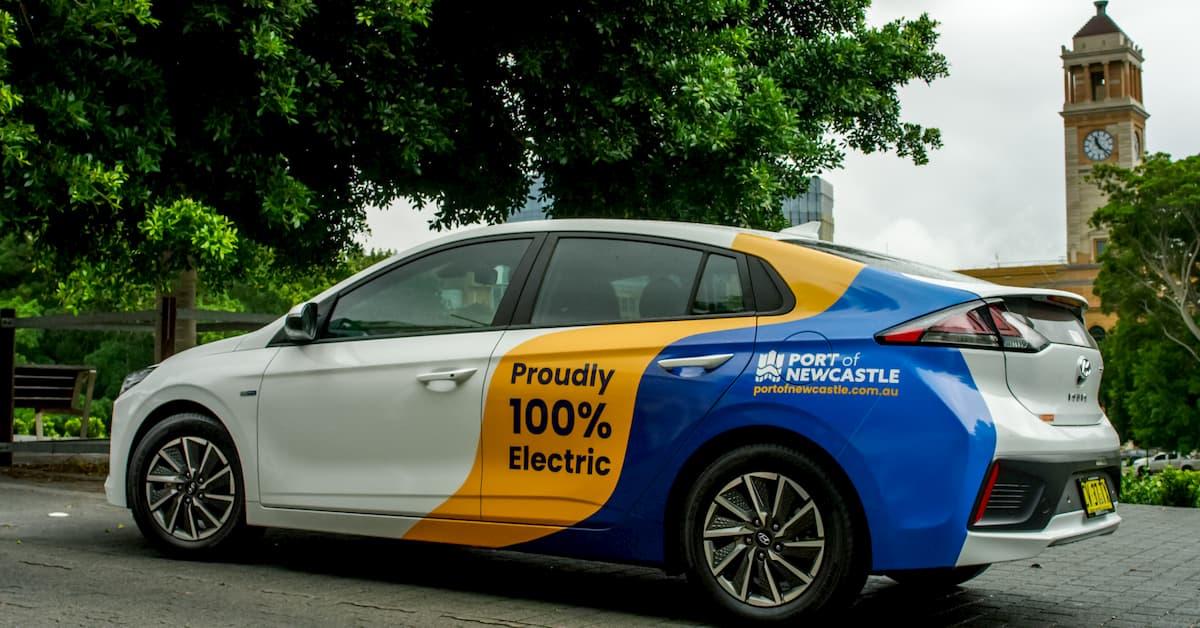Leading the change
Corporate and government fleets account for over half of new vehicle sales in Australia. They are also a significant source of second-hand vehicles. By electrifying their fleets, organisations can have a powerful impact on the overall market, both spurring demand for and increasing supply of electric vehicles.
As the first Australasian port to join the International EcoPorts network, the Port of Newcastle has committed to integrating sustainable practices in all its operations, including fleet cars.
In May 2020, the port took the first step in its transition to a fully electric fleet with the acquisition of four battery electric vehicles (BEVs). Six months later, the port was well along the way to its target of 100% electrification by 2023, with BEVs comprising nine of its 13-strong fleet.
With another BEV arriving in early 2021, the only remaining barrier to full conversion is the lack of electric industrial vehicles.
Jackie Spiteri, Senior Manager, Environment Social Governance said, ‘For the final three we need a towing capacity of four tonnes because we move small boats around, so we’re just waiting for a suitable utility vehicle to come onto the market.’
The BEVs, mostly Hyundai’s Ioniq and Kona models, perform a variety of functions at the port. Two are pool cars for general transport, while the others are used by wharf officers, the survey team and executives overseeing field operations.
Selecting the right mix of chargers
The port has installed two 50-kilowatt DC fast chargers dockside and six 22-kilowatt dual-port AC chargers at head office.
‘It takes approximately 20–25 minutes to recharge the BEVs to 80% using the fast chargers’, Jackie said, ‘while the AC chargers require about four hours to achieve the same result’.
Jackie explained that vehicle usage patterns determine the mix of charger types.
‘The wharf officers are constantly using their vehicles so they need to be able to charge them quickly, whereas people who spend more time in the office are likely to spend a longer period not using the car and can use a slower charge. And obviously there’s a price difference between the two’, Jackie explained.
Showing leadership and saving money
‘The business case for BEVs is both financial and strategic’, Jackie said.
‘While the port will save $20,000 in fuel costs and 48 tonnes of CO2 equivalent annually once the fleet is fully electric’, Jackie said, ‘the driver for us is more about leadership and demonstrating to others that electric vehicles do work’.
‘They’re also the way of the future’, she said.
‘In the UK, they’re banning manufacture, even sale of internal combustion vehicles by 2030 and it’s only going to be a matter of time before we have to do the same, so let’s be leaders and show people that it can be done.
‘Also’, with roll-on, roll-off cargo capacity, ‘we’d really love to see Newcastle as the port of choice for electric vehicle importers’, Jackie said.
In the meantime, the port is helping to encourage BEV uptake locally. In partnership with the City of Newcastle it has provided two public charging stations on the city’s busy foreshore.
Jackie reports, ‘We sponsored the cost of the charging stations and then Council covered the cost of installation and the solar array that sits above them.’
‘I walked past them this morning and there were two electric vehicles on charge there’, she said.
Supporting people when making the switch
‘Engaging with employees to understand what their needs are in terms of range, power and carrying capacity is the key to successfully transitioning to BEVs’, Jackie said, ‘as well as support and training post-implementation’.
Wharf Officers Matt Parish and Calvin Grills said the fleet conversion is a welcome development. They reported that the Konas are quiet, accelerate instantly and, with a typical 450-kilometre range, refuelling needs are similar to conventional cars. But most importantly, ‘they’re nice to drive’, they said.
